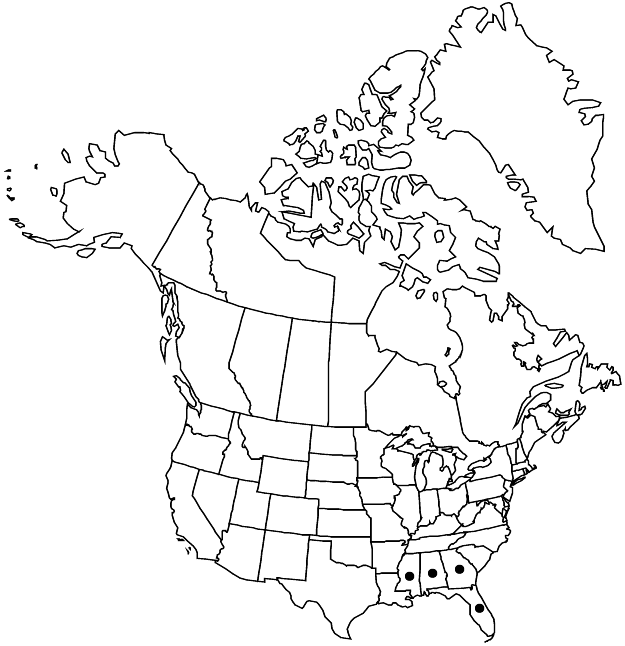Sarracenia rosea
Sida 18: 1188, figs. 1999,.
Plants forming dense clumps; rhizomes 0.8–1.8 cm diam. Pitchers persistent, appearing with or after flowers and producing 1 form continuously all summer, decumbent to ascending, pale green suffused with dull purple-red, frequently with darker reticulated red veins, without white areolae, urceolate, gently S-curved, 6–28 cm, bulging distally, 2–7 cm diam. at widest point, thick, firm, external surfaces densely pubescent, wings 0.6–5 (–6) cm wide; orifice round to oval, gaping, 2–5 cm diam., rim red to maroon, (thick, flaring), loosely revolute, not or scarcely indented distal to wing, (2.6–7.5 mm wide at thickest point); hood erect or with lobes variously arched together beyond orifice, same colors and veined as pitchers, reniform, coarsely undulate to entire, 2–6 × 3–13 cm, wider than long, basal lobes cordate, attached to sides of rim of orifice with no neck, distal portion usually abaxially recurved and notched apically, apex not apiculate, adaxial surface with decurved setae 1–2 mm. Phyllodia absent. Scapes 16–35 cm, longer than pitchers; bracts 0.5–0.8 cm. Flowers moderately mixed fragrant and ill-scented; sepals deep purple-red, 3–4.7 × 1.7–3.8 cm; petals pale to deep pink to nearly white, distal portion ovate to obovate, (4–) 5–6.5 × 2–3.5 cm, margins entire; style disc pale green to nearly white, 4.8–7.4 cm diam., (style arms 2.6–4.1 cm). Capsules 1.5–2 cm diam. Seeds 1.8–2.3 mm.
Phenology: Flowering Mar–Apr.
Habitat: Wet, open seepage bogs, savannas, wet pine flatwoods, stream edges, old interdune swales, ditches, thickets, swamps
Elevation: 0-100 m
Distribution

Ala., Fla., Ga., Miss.
Discussion
Sarracenia rosea occurs on the coastal plain in southwestern Georgia (Lee, Randolph, Taylor, and Tift counties), the Florida panhandle (Gadsden County westward), southern Alabama, and southeastern Mississippi (George and Jackson counties). It differs from S. purpurea most obviously in its pink to nearly white petals and shorter scapes; the flowers of S. rosea are larger on average in most respects than those of S. purpurea. Vegetatively, S. rosea pitchers have thicker orifice rims that are more concave, longer setae on the hood, wider hoods, and, often, thinner pitcher walls than those of S. purpurea. Although there is some overlap of pitcher morphology between the two species, the distinctive features and the allopatric distributions warrant recognition of S. rosea as a separate species. A yellow-flowered variant has been named forma luteola (Hanrahan & James M. Miller) Naczi, Case & R. B. Case.
Sarracenia rosea is attractive and easy to cultivate. It suffers from habitat loss throughout its range. Specimens apparently have not been collected from Georgia since 1902.
Selected References
None.
Lower Taxa
"winged" is not a number."variable" is not a number.No values specified.